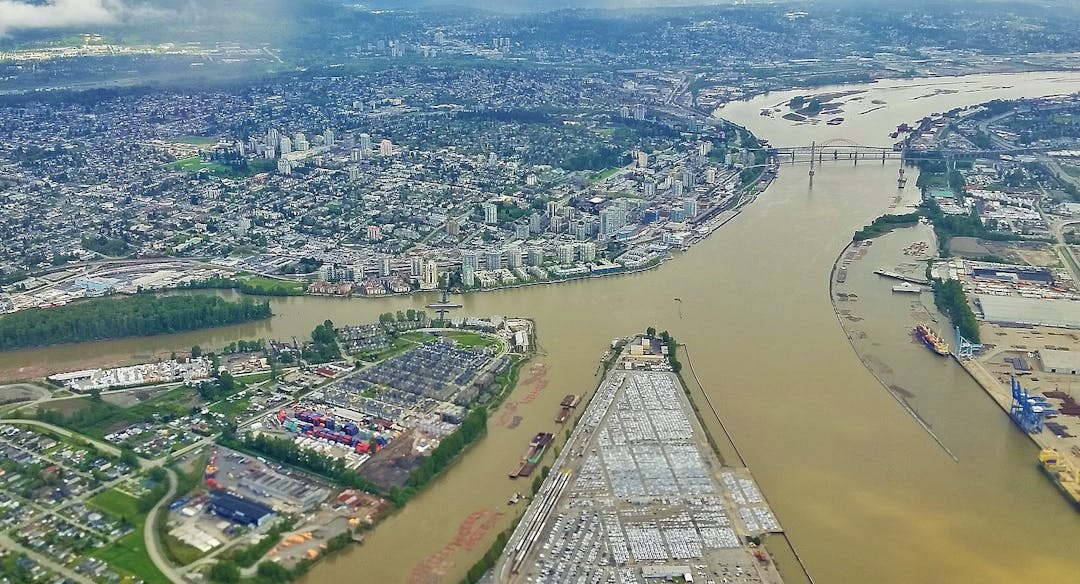Community Energy and Emissions Plan (CEEP) 2050
Consultation has concluded

Project Update, October 2022: At their regular meeting on October 3, 2022, Council adopted the City’s new Community Energy and Emissions Plan. Thank you for your participation in the creation of this Plan, which will guide the City’s emission reduction action as we work towards eliminating net emissions by 2050.
Click here for the complete Plan, and here for the report to Council presenting the Plan and describing the feedback on the draft.
Scroll down, or click here, to read summaries of what we heard through previous community engagement, and how participants’ priorities are reflected in the Plan.
The City anticipates moving into implementing the Plan in the winter of 2022/2023.
Project Overview
Recognizing the importance of addressing climate change, New Westminster City Council adopted a Climate Emergency Declaration in 2019, committing the City to reducing greenhouse gas (GHG) emissions across the community to 45% by 2030, 65% by 2040, and 100% by 2050. In response to the climate emergency, the City established its Seven Bold Steps, which is guiding the process of moving the community towards a zero-carbon future by 2050.
The City is now developing its new Community Energy and Emissions Plan (CEEP) 2050 that will show the path for reducing energy consumption and GHG emissions throughout the community over the next 30 years.
The CEEP 2050 is intended to become the primary or overarching document for the community’s energy and emissions planning, and it will directly support the implementation of the Seven Bold Steps through the identification of energy and emission reduction opportunities, actions, and strategies. The plan will inform decision-making related to land use planning, waste management, sustainable transportation, and energy infrastructure and utility systems for the City.
Draft CEEP
The draft Community Energy and Emission Plan provides a roadmap to approach net zero by 2050, and is a call to action for the City and the broader community.
Jump to the sections described below that are most of interest to you, or review the complete CEEP here.
Part 1 – Defining the Challenge: includes an exploration of the climate challenge we are facing, and the particular impacts and emissions in New Westminster.
Part 2 – CEEP Actions: is organized into five key action areas, including targets for each area, and 55 specific implementation actions. The five action areas are:
- Transportation – supporting sustainable transportation such as biking, eMicromobility (e-bikes, etc.), and electric vehicles;
- Buildings – retrofitting existing buildings and requiring new buildings to be built to high energy efficiency standards that helps reduce emissions;
- Energy – supporting energy conservation, district energy, and renewable energy;
- Waste and circular economy – reducing waste and embracing circular economy principles, which involves reusing, sharing, repairing, refurbishing and recycling existing materials for as long as possible; and
- Natural areas and green infrastructure – preserving and enhancing natural areas and the urban tree canopy, and increasing the use of green infrastructure.
Click here for examples of some actions included in the plan!
The biggest opportunities for GHG reduction are in the transportation and buildings sectors. Recommended actions in these areas look to ensure we reduce energy demand first, improve efficiency, and ultimately switch fuel sources to low carbon sources. This approach will help increase the resiliency of our electricity grid and make us better prepared to withstand the effects of climate change.
Implementation of the CEEP will need to include flexibility, to ensure the City can adapt and pivot as new action opportunities arise with policy and technological change. Ensuring actions are implemented in an equitable way will also be critical to ensuring the transition to a low-carbon community benefits everyone.
Community Engagement
Thank you to everyone who participated and provided input throughout this process. The City conducted a variety of engagement activities from October 2021 to February 2022 to gather input on the CEEP development.
Your feedback and perspectives, combined with research and science, have helped shape a comprehensive, updated made-in-New West draft CEEP that will guide the City towards a low carbon, resilient, and equitable future. Click here to read more about the previous rounds of community engagement and key findings.
The City also gathered community input on the draft document, through July and August 2022, and is now finalizing the plan before bringing it to Council for consideration of adoption in fall 2022.

 Westminster Farmers Market on July 21, where they let attendees know about the draft plan and gathered ideas for community action. Market-goers brought up a wide range of action areas, from building retrofits, to biking, e-biking and e-scootering, to reducing consumption of single-use plastics and packaging.
Westminster Farmers Market on July 21, where they let attendees know about the draft plan and gathered ideas for community action. Market-goers brought up a wide range of action areas, from building retrofits, to biking, e-biking and e-scootering, to reducing consumption of single-use plastics and packaging.

